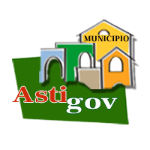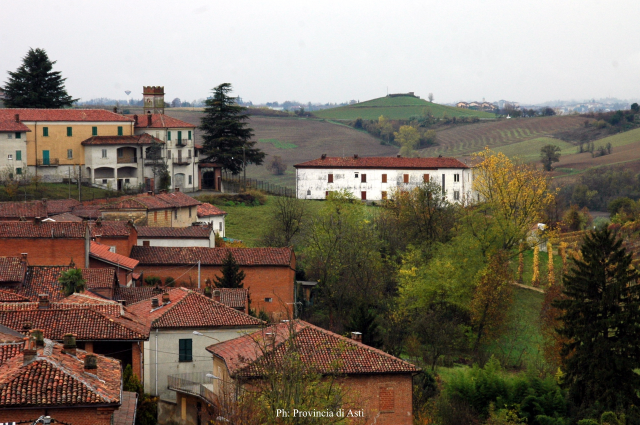Grana Monferrato
Last update 30 January 2024
Grana Monferrato: from the parish churchyard, the Monferrato in a glance
Landscape
Grana Monferrato lies among the hills of northern Astigiano.
The village is about 19 km from Asti, the provincial capital.
Insights
“Presentazione”. Comune di Grana Monferrato, Jun. 15, 2018, www.comune.grana.at.it/it/page/presentazione-ccec14a3-ca03-4d8d-bd11-1da85c35e2a2. Last accessed Jan. 25, 2024.
History
In Roman times, the territory of Grana Monferrato was part of Cisalpine Gaul.
Throughout history, the town was part of the possessions of the Marquisate of Monferrato, a fief of the Lords of Calliano, the Marquises of Occimiano and the Del Carretto family.
Once the Aleramico branch of the Del Carretto family died out, the territory, in 1781, passed into the hands of Amedeo Messier.
Insights
“Storia”. Comune di Grana Monferrato, Jul. 6, 2023, www.comune.grana.at.it/it/page/storia-69f0f8eb-13dd-43df-9db7-c8615ce46a3a. Last accessed Jan. 25, 2024.
Administration
Food and wine and typical products
You can't say that you were in Grana Monferrato if you haven't tasted the typical dish made of donkey stew and the oubià, a thin, sweet, and crunchy waffle in the shape of a disc.
Characteristic of the territory are also the donkey agnolotti, the Piedmontese mixed fry, and salami, all to be enjoyed during the Wine and Food Weekends organized by the local Pro Loco.
Grana Monferrato is also a land of excellent wines, including Barbera, Ruchè, and Grignolino, the latter protagonist of the event Che Grana… Il Grignolino! in July.
Insights
“Presentazione”. Comune di Grana Monferrato, Jun. 15, 2018, www.comune.grana.at.it/it/page/presentazione-ccec14a3-ca03-4d8d-bd11-1da85c35e2a2. Last accessed Jan. 25, 2024.
To be seen
Once in Grana Monferrato, the imposing bulk of the parish Church of St. Mary of the Assumption (Chiesa di Santa Maria Assunta) catches the eye.
Inside the church, the Hall of Reliquaries — Museum of Furniture and Sacred Art (Sala dei Reliquiari — Museo di Arredi ed Arte Sacra) have been set up.
To be added to the itinerary to discover Grana Monferrato: the Church of the Annunciation (Chiesa dell'Annunziata), the Church of St. Anthony (Chiesa di San Antonio), the cemetery Church of St. Mary in Mount Pirano (Chiesa di Santa Maria in Monte Pirano), “Nino Di Muzio” nativity scene and the giant pencils in the vineyard.
Insights
“Circuito dei presepi”. Comune di Grana Monferrato, Aug. 21, 2018, www.comune.grana.at.it/it/page/documentazione. Last accessed Jan. 25, 2024.
“Chiesa dell'Annunziata”. Comune di Grana Monferrato, Jul. 6, 2023, www.comune.grana.at.it/it/page/chiesa-dell-annunziata. Last accessed Jan. 25, 2024.
“Chiesa di San Antonio”. Comune di Grana Monferrato, Jul. 6, 2023, www.comune.grana.at.it/it/page/chiesa-di-san-antonio. Last accessed Jan. 25, 2024.
“Chiesa di San Rocco”. Comune di Grana Monferrato, Jul. 6, 2023, www.comune.grana.at.it/it/page/chiesa-di-san-rocco-4b077b87-010f-47da-a929-470c0603c64c. Last accessed Jan. 25, 2024.
“La chiesa parrocchiale di Santa Maria Assunta”. Comune di Grana Monferrato, Jul. 6, 2023, www.comune.grana.at.it/it/page/la-chiesa-parrocchiale-di-santa-maria-assunta. Last accessed Jan. 25, 2024.
“Punti di Interesse”. Comune di Grana Monferrato, www.comune.grana.at.it/it/point-of-interests. Last accessed Jan. 25, 2024.
Curiosity
The Church of St. Roch (Chiesa di San Rocco) was used as a lazaret during the plague epidemic of the 17th century.
Data source
- Synthesis / reprocessing information taken from the institutional website (current and previous versions) of the Municipality of Grana Monferrato — https://www.comune.grana.at.it
- Cover image source: Provincia di Asti — https://www.provincia.asti.it
Insights
BeWeb - Beni Ecclesiastici in WEB
https://beweb.chiesacattolica.it/
Catalogo Generale dei Beni Culturali
https://catalogo.beniculturali.it/
Centro Interuniversitario di Storia Territoriale "Goffredo Casalis"
https://www.archiviocasalis.it/
Ente Turismo Langhe Monferrato Roero
https://www.visitlmr.it
GAL Basso Monferrato Astigiano
https://www.monferratoastigiano.it/
- Comune di Grana (AT)
https://www.monferratoastigiano.it/comune-di-grana-at/
Wikipedia, l'enciclopedia libera.
https://it.wikipedia.org
- Grana Monferrato
https://it.wikipedia.org/wiki/Grana_Monferrato
See also
News from Grana Monferrato
- Discover the latest news posted on the website of the Municipality of Grana Monferrato
https://www.comune.grana.at.it/it/news
Events in Grana Monferrato
- Discover the events posted on the website of the Municipality of Grana Monferrato
https://www.comune.grana.at.it/it/events
Social network | Municipality of Grana Monferrato
Follow your Municipality on social media:
- Facebook: https://www.facebook.com/comune.grana

